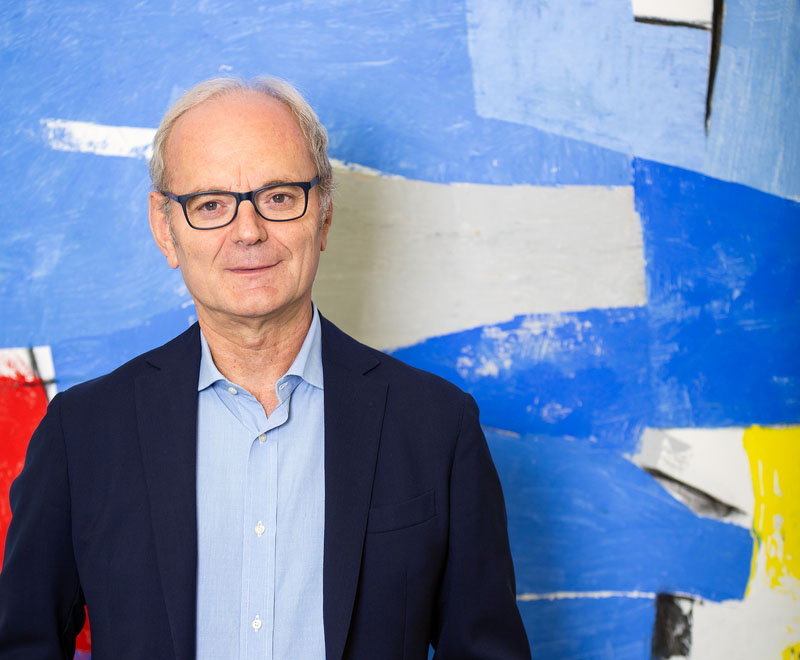Ferigo: INWIT is set to take off

Having just ended the first quarter which incorporates the post-merger figures between the Telecom Italia (TIM) and Vodafone towers, the next 12-18 months will be dedicated to the company’s “set-up”.
Having just ended the first quarter which incorporates the post-merger figures between the Telecom Italia (TIM) and Vodafone towers, the next 12-18 months will be dedicated to the company’s “set-up”. CEO Giovanni Ferigo explained this to MF-Milano Finanza. What does the future hold? The drone business and consolidation at a European level.
The ‘new’ INWIT is already operational, and soon, once the company’s ‘set-up’ has been completed, it will be able to express its full potential. In an interview with MF-Milano Finanza, CEO Giovanni Ferigo reviewed the results achieved so far and outlined the challenges to be faced in the near future.
After coming to the end of the first quarter after the merger, what transpired and how do you plan to end the year?
“The last six months have been challenging, from the creation of the new company, and arrival on the FTSE MIB to the launch of the 1 billion bond. The new results tell us that we are now playing in the Champions League, expectations are rising. We gave guidance which foresees year-end revenues of between 660 and 665 million and an EBITDA net of rents of 410-415 million.”
What kind of difficulties have been encountered?
“We had to unify the processes and philosophies of two different companies, which have been adversaries for 25 years. We had to put in place a new integrated system, taking into account the limitations imposed by the Italian Competition Authority (ICA), and this was not a trivial matter. But the results are in the numbers.”
What remains to be done?
“The machinery set-up needs completing. We also need to implement a single system based on a new kind of IT that optimises not only the technical but also the commercial and financial phases. And then, in October, the implementation of the procedure provided for by the ICA to make sites in municipalities with over 35,000 inhabitants available to the new MNOs will begin. We’ll be able to go back to a Tenancy Ratio, which, post-merger, has dropped to around 1.8 today, compared to previous values of 1.9 or even more”.
Will the new system allow cost savings?
“It will do indirectly; if you optimise your processes, you also optimise your expenses. We will also be very focused on innovation and sustainability.”
What will the business focus on?
“The first role is to support operators in the digitisation of the country by proposing the most suitable infrastructure solutions. In addition to acquiring new tenants, we will focus on new customer solutions, without forgetting that we have always been among the greatest supporters of dedicated indoor enclosures. Only this week we announced agreements with the new luxury segment of the Lungarno Collection chain and Luiss University. The goal is to provide a one-stop-shop service with all the services an operator needs.”
Let’s talk about 5G: what kind of developments are you expecting?
“The spread of 5G will be largely implemented outdoors, but also indoors. 5G is often and incorrectly associated with health problems or safety hazards. These are superficial media sensations that only serve to distract us from the opportunity to achieve a digital breakthrough for the Italian economy. 5G could lead to an increase of 0.3 percentage points of GDP growth”.
Is there a genuine need for new technology?
“It was already there before, on top of that, Covid-19 has accelerated the processes by at least five to six years. In 12-18 months, the 4G network will no longer be able to handle the expected increase in the amount of data in circulation.”
When will 5G technology make its first real impact on everyone’s lives?
“Ultimately I think it will take about 3 years, but 5G terminals are already available on the market, which is already a good sign. And the main Italian cities are set to be ready from the end of 2020.”
These new services you mentioned, what will they be?
“The towers are certified from the geolocation standpoint and are the closest link to the end customer. It is essential for a flying object to know where it is compared to everything else. I’m talking about the industry that’s destined to grow year after year: the drone sector. The towers will be able to provide flight support, also in accordance with the new regulations. Then I think of all those services that require low latency, i.e. instantaneous responses for customers. INWIT’s other big challenge involves small cells.”
Are you studying M&A operations?
“We already have 22 thousand sites to manage. For the next 12-18 months, growth will only be organic. Like I said, we have to complete the set-up. Then we’ll see.”
However, the European market is in turmoil.
“We are also observing a strong dynamism. Vantage, the Vodafone tower company, has recently been established. I’m not ruling out the possibility that Telefonica and Deutsche Telekom may make similar arguments in the coming months. In fact, I expect market consolidation. As far as we’re concerned, once we develop our best-in-class model, we can look around.”